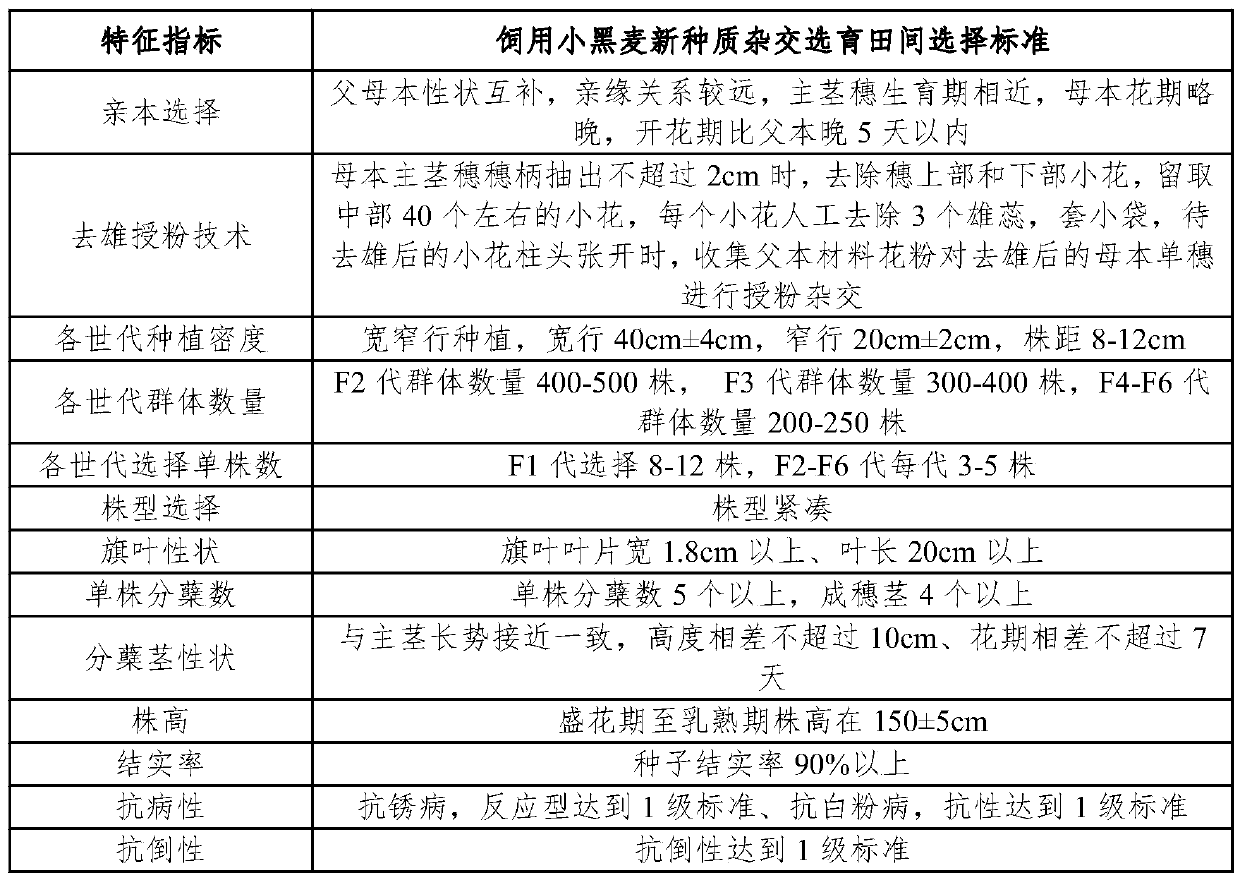Method for hybrid breeding of new germplasm of feed triticale
A new germplasm and rye technology, applied in the direction of botanical equipment and methods, application, plant gene improvement, etc., can solve the problems of lack of quantification, waste of test space, hindering individual development, etc., achieve good application value, improve The effect of work efficiency
- Summary
- Abstract
- Description
- Claims
- Application Information
AI Technical Summary
Problems solved by technology
Method used
Image
Examples
Embodiment Construction
[0037] In order to better explain the present invention and facilitate understanding, the present invention will be described in detail below in conjunction with specific embodiments.
[0038] The invention innovates a breeding technology for new triticale germplasm for fodder use, and defines a series of quantitative field selection standards in the creation process of new triticale germplasm for fodder use. Specifically, in the breeding process of the new germplasm of the present invention, focus on selection period, agronomic traits, and stress resistance screening, including plant type, plant height, tiller number, leaf traits, spike rate, seed setting rate, and lodging resistance. , disease resistance and other traits were quantitatively expressed, and at the same time, the group size, planting density, and field layout of each generation of the new triticale germplasm for breeding were also clarified, which facilitated field operations when selecting offspring and saved m...
PUM
 Login to View More
Login to View More Abstract
Description
Claims
Application Information
 Login to View More
Login to View More - R&D
- Intellectual Property
- Life Sciences
- Materials
- Tech Scout
- Unparalleled Data Quality
- Higher Quality Content
- 60% Fewer Hallucinations
Browse by: Latest US Patents, China's latest patents, Technical Efficacy Thesaurus, Application Domain, Technology Topic, Popular Technical Reports.
© 2025 PatSnap. All rights reserved.Legal|Privacy policy|Modern Slavery Act Transparency Statement|Sitemap|About US| Contact US: help@patsnap.com


